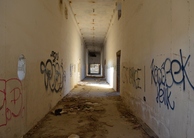Wrongful Conviction in the American Judicial Process: History, Scope, and Analysis
By
2012, Vol. 4 No. 08 | pg. 3/3 | « A confession is arguably the most damaging evidence that can be brought against a defendant in a court of law. Ostensibly, it seems reasonable to assume that one would only confess to a crime that he or she had actually committed. However, in the United States, false confessions may result in nearly 400 wrongful felony convictions annually (Cassell, 1998). Leo (2005) affirmed that false confessions, to include guilty pleas, were present in 25 percent of wrongful conviction cases. Notably, such confessions were disproportionately concentrated in cases of serious violent crime and capital offenses. A full two-thirds of post-conviction DNA exoneration homicide cases involved false confessions. In eight post-conviction DNA exoneration cases, false confessions resulted in conviction despite exclusionary forensic evidence presented at the trials. One is compelled to question the differences in interrogation methods utilized by investigators according to the severity of the crime. In numerous wrongful conviction cases, the defendants were mentally ill and/or juveniles. Many were interrogated for several hours and reported being threatened or physically coerced by investigators (Garrett, 2012). Nonetheless, this pervasive contributor to wrongful convictions can be easily remedied. Most importantly, all interrogations should be recorded in their entirety to improve the reliability of confessions as evidence (Huff, 2002). Over 750 law enforcement agencies have adopted this practice voluntarily. Prosecutors and investigators often welcome such policy changes as they generally result in fewer motions to suppress and reduce claims of abuse. Provided that these recordings are reviewed by a judge prior to trial, this practice protects the innocent and aids in prosecution (Garrett, 2012). The criminal justice system is comprised of individuals who are incentivized by their own personal responsibilities and goals which can conflict with those of other actors within the system. Consequently, post-conviction exonerations have exposed unethical behavior at every stage of the judicial process (Huff, 2002; Rattner, 1988). Accordingly, it would be disingenuous to address the wrongful conviction phenomenon whilst ignoring the prevalence of governmental misconduct. Police investigators have repeatedly been found to have coerced confessions and witness identifications, mislead jurors regarding their observations, intentionally withheld exculpatory evidence from prosecutors, and provided compensation to informants for unreliable evidence. Similarly, state prosecutors have mishandled or destroyed evidence as well as withheld it from the defense, pressured witnesses, and relied on fraudulent forensic “experts” whose opinions are based on compensation (Garrett, 2012; Gould & Leo, 2010).This behavior, while abhorrent, is likely to continue unless legislators can overcome a fundamental problem; investigators and prosecutors are generally rewarded based upon the number of cases solved and convictions obtained. Viable quality assurance measures must be adopted in order to ensure the accuracy of investigations in identifying the guilty (Gould & Leo, 2010; Martin, 1998). Moreover, real consequences must be implemented for those who engage in misconduct (Gould, 2008). Anyone shown to have knowingly or recklessly contributed to the conviction of an innocent person should be subject to a legal public response. Potential repercussions should include the revocation of attorneys’ licenses to practice and law enforcement officials’ peace officer certifications in addition to criminal charges and/or civil suits (Huff, 2002). ConclusionResearch conducted in the years since Bedau and Radelet’s watershed study has revealed the once majestic American judicial system to be as fallible as the humans who comprise it. Previously content with presumptive faith in justice and inflated clearance rates, legal professionals have acknowledged the necessity for reform within this cherished institution. Legislators and politicians have largely accepted the empirically-supported criticism and adopted policies which aim to prevent miscarriages of justice. Technology has afforded us the opportunity to identify systematic flaws and reduce the negative impact of the human errors that contribute to wrongful conviction; such as eyewitness misidentification, false confessions, and misconduct. Additional miscarriages will undoubtedly be revealed in the future as advocacy agencies continue to represent and support the innocent. Simultaneously, local and state governments, along with law enforcement agencies, should continue to embrace improved lineup, interrogation, and evidence handling procedures. This process promises to be wrought with humbling and uncomfortable revelations as more inadequacies are brought to light. Eventually, the innocent man convicted will become a rarity in the American justice system. ReferencesAaronson, D. E. (2008). Cross-racial identification of defendants in criminal cases: A proposed model jury instruction. Criminal Justice, 23(1), 4-12. Anderson, J. B. (2005). Hamdi v. Rumsfeld: Judicious balancing at the intersection of the executive’s power to detain and the citizen-detainee’s right to due process. Journal of Criminal Law & Criminology, 95(3), 689-723. Blackerby, J. C. (2003). Life after death row: Preventing wrongful capital convictions and restoring innocence after exoneration. Vanderbilt Law Review, 56(4), 1179-1226. Bowman, L. E. (2008). Lemonade out of lemons: Can wrongful convictions lead to criminal justice reform? Journal of Criminal Law & Criminology, 98(4), 1501-1517. Campbell, K. & Denov, M. (2004). The burden of innocence: Coping with a wrongful imprisonment1. Canadian Journal of Criminology and Criminal Justice, 46(2), 139-163. Cassell, P. G. (1998). Protecting the innocent from false confessions and lost confessions—and from Miranda. Journal of Criminal Law & Criminology, 88(2), 497-556. Chambliss, W. J. (1973). The saints and the roughnecks. Society, 11, 24-31. Clark, S. E. & Godfrey, R. D. (2009). Eyewitness identification evidence and innocence risk. Psychonomic Bulletin & Review, 16(1), 22-42. doi: 10.3758/PBR.16.1.22 Crone, J. A. (2011). How can we solve our social problems? (2nd ed.). Los Angeles, CA: Sage. Cross, F. B. (2005). Law and trust. Georgetown Law Journal, 93(5), 1457-1545. Darabont, F. (Director). (1994). The shawshank redemption [Motion picture]. United States: Castle Rock Entertainment. Darabont, F. (Director). (1999). The green mile [Motion picture]. United States: Warner Bros. Pictures. Garrett, B. L. (2012). Learning from patterns of mistakes. Criminal Justice, 26(4), 30-35, 42. Givelber, D. (2005). Lost innocence: Speculation and data about the acquitted. The American Criminal Law Review, 42(4), 1167-1199. Gould, J. B. (2008). The lessons of wrongful convictions. Criminal Justice Ethics, 27(1), 2108-2111. Gould, J. B. & Leo, R. A. (2010). One hundred years later: Wrongful convictions after a century of research. Journal of Criminal Law & Criminology, 100(3), 825-868. Halsted, J. B. (1992). The anti-drug policies of the 1980s: Have they increased the likelihood of both wrongful convictions and sentencing disparities? Criminal Justice Policy Review, 6(3), 207-228. doi: 10.1177/088740349200600302 Harmon, T. R. (2004). Race for your life: An analysis of the role of race in erroneous capital convictions. Criminal Justice Review, 29(1), 76-96. doi: 10.1177/073401680402900106 Huff, C. R. (2002). Wrongful conviction and public policy: The American Society of Criminology 2001 Presidential address. Criminology, 40(1), 1-18. Huff, C. R. (2004). Wrongful convictions: The American experience. Canadian Journal of Criminology and Criminal Justice, 46(2), 107-120. Huff, C. R., Rattner, A., Sagarin, E., & MacNamara, D. E. J. (1986). Guilty until proven innocent: Wrongful conviction and public policy. Crime & Delinquency, 32(4), 518-544. doi: 10.1177/0011128786032004007 Jackiw, L. B., Arbuthnott, K. D., Pfeifer, J. E., Marcon, J. L., & Meissner, C. A. (2008). Examining the cross-race effect in lineup identification using Caucasian and First Nations samples. Canadian Journal of Behavioural Science, 40(1), 52-57. Krieger, S. A. (2011). Why our justice system convicts innocent people, and the challenges faced by innocence projects trying to exonerate them. New Criminal Law Review, 14(3), 333-402. doi:10.1525/nclr.2011.14.3.333 Leo, R. A. & Gould, J. B. (2009). Studying wrongful convictions: Learning from social science. Ohio State Journal of Criminal Law, 7(7), 7-30. Leo, R. A. (2005). Rethinking the study of miscarriages of justice: Developing a criminology of wrongful conviction. Journal of Contemporary Criminal Justice, 21(3), 201-223. doi: 10.1177/1043986205277477 Leon-Guerrero, A. (2011). Social problems: Community, policy, and social action (3rd ed.). Los Angeles, CA: Sage. Marquis, J. (2005). The myth of innocence. Journal of Criminal Law & Criminology, 95(2), 501-521. Martin, A. W. (1998). Prosecutorial misconduct. Georgetown Law Journal, 86(5), 1677-1693. Oaksford, M. & Hahn, U. (2004). A Bayesian approach to the argument from ignorance. Canadian Journal of Experimental Psychology, 58(2), 75-85. Ousey, G. C. & Lee, M. R. (2010). To know the unknown: The decline in homicide clearance rates, 1980-2000. Criminal Justice Review, 35(2), 141-158. doi: 10.1177/0734016809348360 Rattner, A. (1988). Convicted but innocent: Wrongful conviction and the criminal justice system. Law and Human Behavior, 12(3), 283-293. doi:10.1007/BF01044385 Rothstein, M. A. & Talbott, M. K. (2006). The expanding use of DNA in law enforcement: What role for privacy? The Journal of Law, Medicine & Ethics, 34(2), 153-164. Risinger, D. M. (2007). Innocents convicted: An empirically justified factual wrongful conviction rate. Journal of Criminal Law & Criminology, 97(3), 761-806. Schmalleger, F. & Smykla, J. O. (2009). Corrections in the 21st Century (4th ed.). New York, NY: McGraw Hill. Siegel, A. M. (2005). Moving down the wedge of injustice: A proposal for a third generation of wrongful convictions scholarship and advocacy. The American Criminal Law Review, 42(4), 1219-1237. Steinback, R. (2007). The fight for post-conviction DNA testing is not yet over: An analysis of the eight remaining “holdout states” and suggestions for strategies to bring vital relief to the wrongfully convicted. Journal of Criminal Law & Criminology, 98(1), 329-361. Taslitz, A. E. (2006). Wrongly accused: Is race a factor in convicting the innocent? Ohio State Journal of Criminal Law, 4, 121-133. U.S. Census Bureau. (2011). Current population reports: Income, poverty, and health insurance coverage in the United States, 2010. Washington, DC: U.S. Government Printing Office. U.S. Department of Justice: Federal Bureau of Investigation. (2011, September). Crime in the United States, 2010. Retrieved from http://www.fbi.gov/about-us/cjis/ucr/crime-in-the-u.s/2010/crime-in-the-u.s.-2010/clearancetopic.pdf U.S. Department of State. (2011, October). Background note: Hong Kong. Retrieved from http://www.state.gov/r/pa/ei/bgn/2747.htm Weber, N. & Perfect, T. J. (2012). Improving eyewitness identification accuracy by screening out those who say they don’t know. Law and Human Behavior, 36(1), 28-36. doi:10.1037/h0093976 Zalman, M. (2006). Criminal justice system reform and wrongful conviction: A research agenda. Criminal Justice Policy Review, 17(4), 468-492. doi: 10.1177/0887403406292740 Zalman, M., Larson, M. J., & Smith, B. (2012). Citizens’ attitudes toward wrongful convictions. Criminal Justice Review, 37(1), 51-69. doi: 10.1177/0734016811428374 Suggested Reading from Inquiries Journal
Inquiries Journal provides undergraduate and graduate students around the world a platform for the wide dissemination of academic work over a range of core disciplines. Representing the work of students from hundreds of institutions around the globe, Inquiries Journal's large database of academic articles is completely free. Learn more | Blog | Submit Latest in Criminology & Criminal Justice |
















